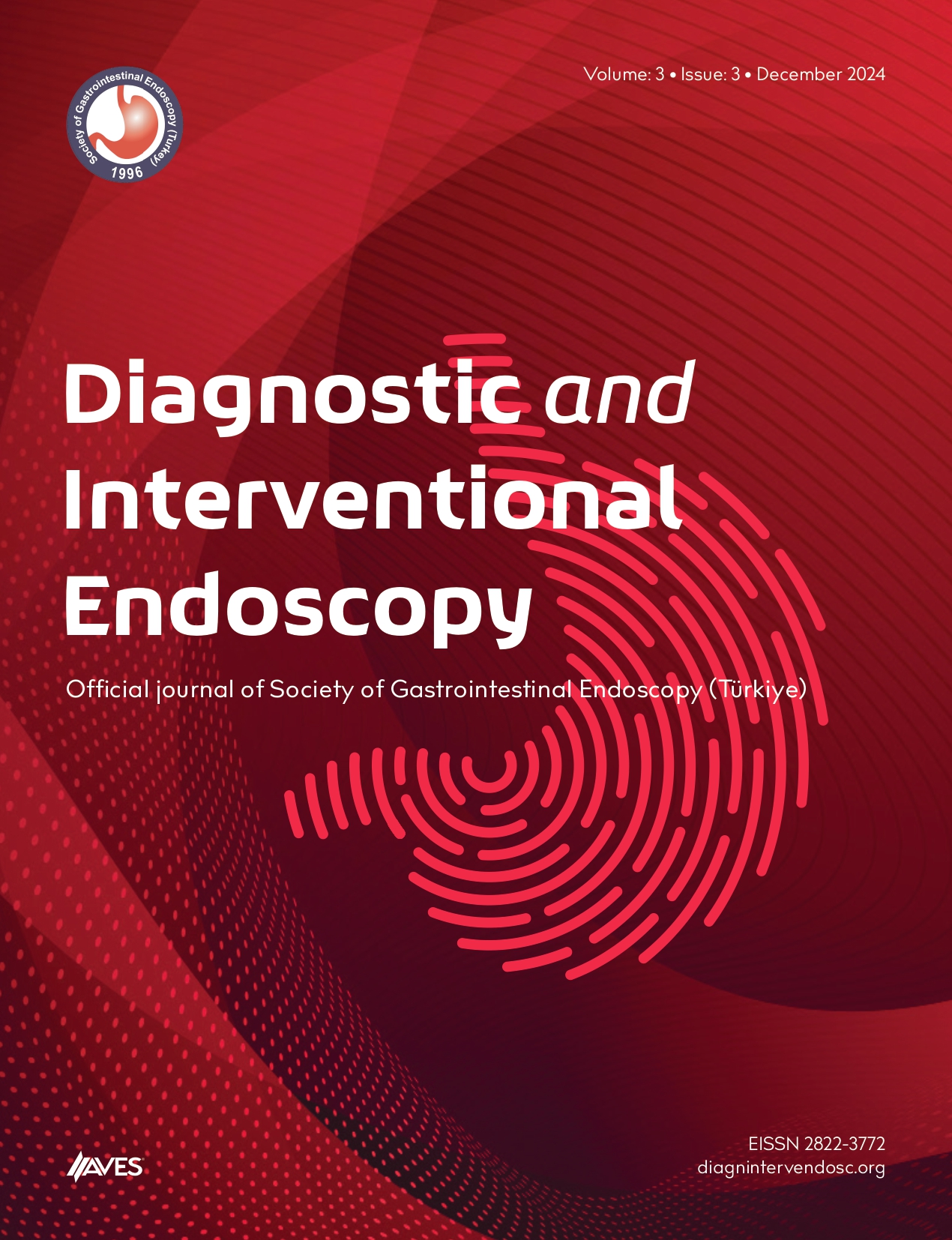Objective: Gastrointestinal polyps form as a result of epithelial or submucosal tissues growing and protruding towards the intestinal lumen. These are seen at a rate of 2% in childhood. The aim of this study was to evaluate the demographic and clinical findings of pediatric cases determined to have colon polyps.
Methods: The study included a total of 78 pediatric cases, comprising 37 (47.4%) females and 41 (52.6%) males, who underwent colonoscopic polypectomy in the Paediatric Gastroenterology Clinic between 2010 and 2021.
Results: The mean age of the patients was 8.0 ± 4.3 years (range: 1-17 years). The complaints on presentation were mostly bloody feces, chronic abdominal pain, diarrhea, constipation, and polyp prolapse. The mean duration of complaints was 6.5 ± 2.0 months (range: 1-18 months). A familial history of polyps was present in 9 cases. The presence of a single polyp was determined in 67 and a pedunculated polyp in 63. The most frequent localization of the polyps was the rectum. Polypectomy was performed in all the cases. Surgical repair was performed in 3 cases that developed perforation after the procedure. Histopathologically, juvenile polyps were determined to be seen most often. Of the 9 children diagnosed with familial polyposis coli, 4 were diagnosed with Peutz–Jeghers syndrome, 4 with familial adenomatous polyposis syndrome, and 1 with Cowden syndrome.
Conclusion: As a result of the more frequent use of endoscopic interventions in childhood, the diagnosis and treatment of colon polyps have become easier. In cases with Peutz–Jeghers syndrome, the risk of perforation during polypectomy must be taken into consideration.
Cite this article as: Deveci U, Dogan Y, Kayaokay AM, et al. An evaluation of demographic, clinical, endoscopic and pathological findings in children who underwent colonoscopic polypectomy: A pediatric gastroenterology clinic experience. Diagn Interv Endosc. 2024;3(1):1-4.

.png)


.png)